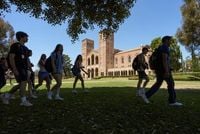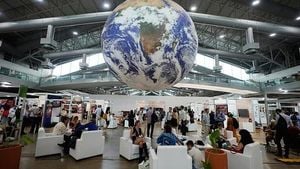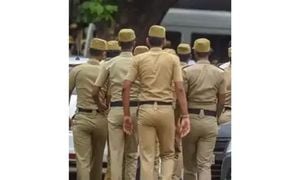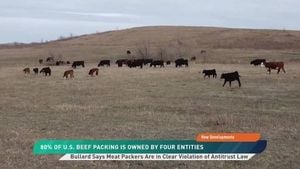On September 24, 2025, the world of American law and higher education found itself at the intersection of federal power, academic freedom, and the boundaries of executive authority. As the Supreme Court prepared for a pivotal term, a federal judge’s order in California sent shockwaves through university halls and the corridors of Washington, D.C.—all while the Trump administration’s legal strategies and policy maneuvers continued to dominate headlines.
In a forceful decision on September 23, U.S. District Judge Rita Lin ordered the Trump administration to restore over $500 million in research grants that had been withdrawn from UCLA and other University of California (UC) schools. According to reporting by the San Francisco Chronicle, the administration had frozen more than $324 million in UCLA research funding on August 1, 2025, demanding a staggering $1 billion payment and sweeping changes to admissions policies as conditions for returning the funds. The move, which affected grants across science, health, and environmental research, was justified by federal agencies on grounds of alleged racial and gender discrimination, antisemitism, and illegal affirmative action—despite California’s own 1996 ban on such practices.
Judge Lin, appointed by President Joe Biden, did not mince words in her ruling. She found the government’s justification for the funding cutoffs lacking, calling out the “unreasoned form letters” sent by the Department of Transportation and the Department of Health and Human Services. These letters, Lin wrote, failed to explain how long-standing research into medical and environmental issues in low-income communities could constitute discrimination. “The termination letters are evidence of ‘viewpoint discrimination,’” she declared, underscoring the broader constitutional stakes at play. In her decision, Lin cited a 9th U.S. Circuit Court of Appeals ruling that allowed the researchers’ suit to proceed, and she rejected the administration’s argument that the researchers should have brought their case before the Court of Federal Claims in Washington, D.C.—a court where, notably, ten of sixteen judges were appointed by Trump.
“The government’s position is that it could flagrantly violate the rights of researchers—even by terminating the federal funding of all Black researchers, or every researcher with an Asian last name—and the researchers would have nowhere to sue to undo those wrongs, unless their universities decided to sue in the Court of Federal Claims,” Judge Lin wrote. She concluded, “The district courts are the only forum where the UC researchers could defend their constitutional and statutory rights. This Court will not shut its doors to them.”
The stakes for academic freedom and scientific progress were not lost on those directly involved. Claudia Polsky, a UC Berkeley law professor and the attorney representing the researchers, described the ruling as a victory for both academic study and freedom of thought. “Every week and month they can keep the funding turned on, they can do research, not have to fire staff or end their labs,” Polsky told the Chronicle. She added that the decision “gives the UC system and UCLA leverage in negotiating with Trump,” whom she accused of “trying to extort a billion-plus dollars” from the Los Angeles university. The Justice Department, for its part, declined to comment, but observers expect the administration to appeal the ruling to the 9th Circuit Court of Appeals.
This legal battle played out against a backdrop of mounting tension between federal authority and institutional independence. On the same day, SCOTUSblog published a comprehensive roundup of Supreme Court-related news, highlighting the many ways in which the Trump administration’s actions were being scrutinized by the judiciary. The Federal Reserve, for example, was anxiously awaiting a Supreme Court decision on the administration’s request to fire Fed Governor Lisa Cook—an outcome that could have profound implications for the independence of America’s central bank. “Officials are increasingly worried that if the Supreme Court allows for Cook’s removal, even temporarily, it will give the president the green light to begin picking off the central bank’s most senior officials one by one,” reported the Financial Times. Columbia Law School’s Lev Menand put it bluntly: “In many ways, this decision is for all the marbles.”
Elsewhere, President Trump’s proclamation raising H-1B visa fees to a jaw-dropping $100,000 was drawing legal fire, with experts debating whether the administration’s economic justification would survive judicial scrutiny. According to Reuters, while the Supreme Court had previously upheld broad presidential authority in immigration matters (notably in Trump v. Hawaii), some legal scholars argue that the economic rationale behind the visa fee hike may not receive the same deference from the courts.
Meanwhile, a seemingly small incident at an Office Depot in Kalamazoo, Michigan, reignited national debate over when businesses can refuse service based on political or ideological grounds. After workers declined to make copies of a poster honoring conservative commentator Charlie Kirk, the company fired the employees and apologized, but the episode echoed the Supreme Court’s 2023 decision allowing a Colorado web designer to refuse same-sex wedding commissions on First Amendment grounds. As the Wall Street Journal noted, such cases underscore the ongoing friction between freedom of expression and anti-discrimination principles.
California, too, found itself at the center of legal controversy after Governor Gavin Newsom signed SB 627, a bill prohibiting law enforcement officers—including federal agents—from wearing facial coverings while on duty. Critics like CalMatters columnist Dan Walters dismissed the measure as unenforceable, pointing to Supreme Court precedents that limit state power over federal officers. “State and local authorities have no power to arrest federal officers for official actions, no matter how questionable they may be,” Walters wrote, referencing historical cases dating back to the 19th century.
Amid these legal and political storms, the judiciary’s human side also came into focus. The late Justice David Souter’s love of literature was celebrated in a posthumous “Top 10 Book List” shared by former clerks on SCOTUSblog, a reminder that even the highest judges are shaped by curiosity and the written word. And in his forthcoming memoir, former Justice Anthony Kennedy reflected on his pivotal role in Supreme Court rulings on gay rights and abortion, candidly discussing his personal struggle with abortion law. “Because of my ever-constant belief that life must be protected from the moment of conception, I struggled with the idea that the Constitution should allow some choice to end a pregnancy,” Kennedy wrote, adding that this internal conflict nearly led him to leave the bench.
Calls for greater transparency at the Supreme Court also grew louder, with Erwin Chemerinsky, dean of UC Berkeley School of Law, urging the justices to broadcast opinion announcements, televise oral arguments, and provide clearer explanations for their decisions. As Chemerinsky argued, increased openness is one reform that transcends ideological divides and could restore some measure of public trust in the institution.
As the 2025-26 Supreme Court term loomed—with a response brief due in the Lisa Cook case and the inaugural SCOTUSblog Summit on the horizon—the legal battles of September 2025 served as a vivid reminder: in America’s ongoing struggle to balance power, rights, and the rule of law, the courts remain both the last word and the final safeguard.




